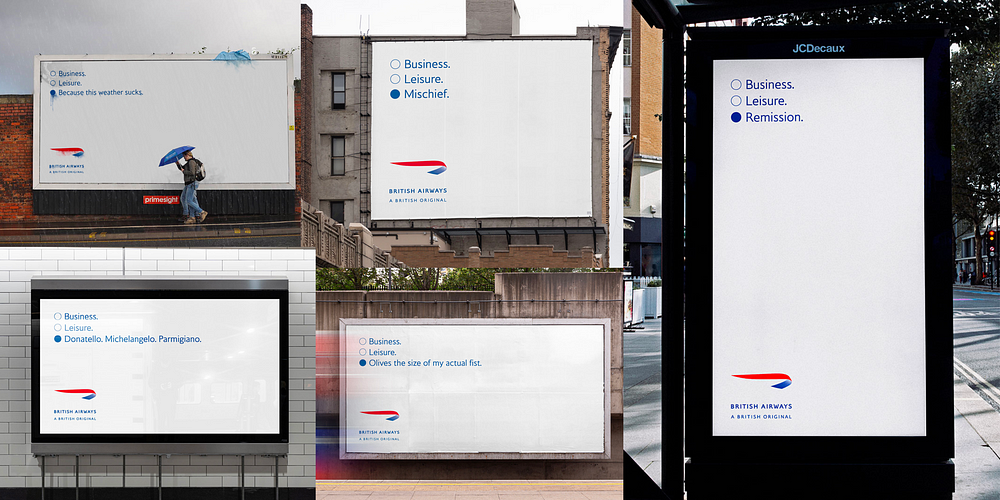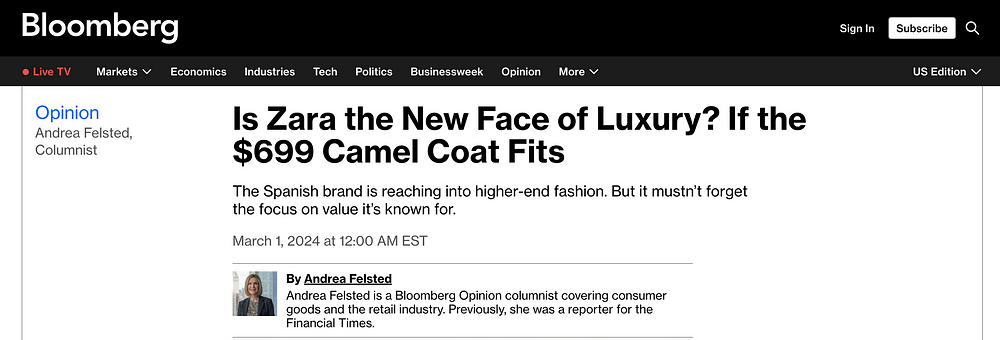Why does British Airways spend on ads that aren’t designed to sell flights?
A few weeks ago British Airways dropped a new outdoor ad campaign, Windows, capturing the wonder felt by passengers peering out the window at 35,000 feet. The photography is standout, inspiring, and emotional. It also.. doesn’t feel like an ad. At least to marketers, who noted the lack of logo, buy button, and tagline. Instead of selling a product or price, the ad sells a feeling.Photo Credit: British Airways/Uncommon
There’s no slogan, no website, no call to action. There isn’t a QR code for curious minds to learn more. In fact, the name of the airline is barely visible. — Skift
A history of emotional campaigns
In 2022, British Airways launched another feelings-forward campaign showing off all the reasons we fly. Agency Uncommon produced 512 (!) different versions for out of home, digital, and print placements. Source: Muse by Clio
Source: Muse by Clio
While lovely, these ads also do not feel the most commercially savvy. Wheres the buy button? The call-to-action? The pitch for flying British Airways? In fact, British Airways’ focus on emotional brand advertising over commercial ads is incredibly strategic.
Understanding the customers’ decision making journey
The conversion moment for a flight is online. You have limitless options, and price comparison is incredibly easy. BA will never win on price. Their operations are too expensive. BA flies out of the best airports. They pay for the good gates that are closest to security. They offer better food, better seats, and better service than their low-cost counterparts EasyJet and RyanAir. BA’s advertising strategy is to get in your head before the price game begins. So when you see a flight from London to Paris and RyanAir is £45 and British Airways is £145, you pay £145. Easily.
Why doesn’t British Airways advertise their features then? Sell the fact that you don’t need to journey to a far off airport to catch a BA flight. Show off the more comfortable seats. The included food. Rename British Airways to Better Airways. The problem is, if BA focuses on amenities, then they risk inviting themselves back into pricing. Is a slightly better seat worth really $100 more? Do I need to pay to not walk to the far terminal? The cab to the far away airport will only cost $50 more..
BA wants you to avoid that conversation altogether. They want you to get excited about traveling and associate that excitement with BA. Make BA the default for a great trip.
When your brand is the default, the question shifts from savings to downgrade:
- Before: do I pay $100 to upgrade to British Airways?
- After: do I downgrade to RyanAir to save $100?
Instead of being on the backfoot, reacting to price, brand advertising puts BA in the driver’s seat, setting the bar for customer experience and expectations. And the ads are just one part of a cohesive strategy. Ads set the emotional tone for the brand, while the customer experience delivers on that expectation live.
“We were very clear that it will be a brand campaign and not an advertising campaign as it’s much bigger than an ad…The food menu’s part of it, the entertainment is part of it, the uniform is part of it and the safety video is part of it,” [BA Chief Customer Officer Calum] Laming says. Laming is of the firm belief that everyone in customer and brand roles in the service industry has a role to play in how the brand is perceived. -The Drum, Uncommon extends 500-ad Cannes Lions-winning British Airways campaign
Only one price leader can survive
In any market, it’s very hard for more than one company to win on price. Walmart innovated operations with its hub and spoke model and drove other big box retailers out of business with their lower prices. Target survived — not by competing on price, but by shifting to an emotional proposition — better design, nicer stores, curated selection — as conveyed through store experience, bold advertising, and upmarket collaborations. Wouldn’t you rather shop there?
Again, the dynamic flipped. Walmart set low price expectations. Target then set high customer experience expectations. And the dynamic went from “Is it worth paying more for Target?” to “I love Target. Do I want the hassle of going to Walmart?”
As fast fashion upstarts Shein and Temu offer rock-bottom prices in the US, fast fashion innovator Zara appears to be following a similar upmarket strategy. The Spanish retailer recorded a record share price in March thanks in part to raising its clothing prices. Zara’s response to faster fashion? Go upmarket. Source: Bloomberg
Zara’s response to faster fashion? Go upmarket. Source: Bloomberg
Brand Marketing can sell value. Or it can lift expectations.
If you find yourself being undercut on price by your competition, one option is to fight back with even lower pricing and join your competition at the bottom. Option two is to lift expectations. Determine a positioning that only you can offer, and that customers will enjoy. Then, ingrain that experience emotionally through advertising, while delivering on a better experience via your product. Some customers will always choose the lowest cost. If you choose your positioning well, you get the more fun challenge of charging more to craft a better experience.
Don’t miss out on brand insights — Sign up for emails or follow me on Medium.
Looking to define your brand proposition beyond price?
I run brand consultancy Embedded — where I partner with founders and C-suite executives to unlock brand growth.
Not sure where to start? Many clients opt for ad-hoc coaching — hourly consultations on any aspect of your marketing and brand strategy. Get in touch here, or book a session.





































